JUST EAST OF THE EXPRESSWAY on Diversey, there’s a massive building with an old clock tower, which used to be a lamp factory. Across from it was a small business that served the workers at that factory, matter-of-factly called Factory Lunch Box, as you can read on the tattered, decaying awning.
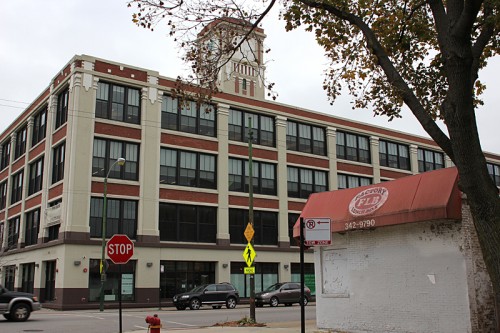
Both are long since defunct. The factory has taken on new life as a LEED-certified office complex called the Green Exchange, home to everything from traders to artists to an upcoming Ale Syndicate brewery to a preschool. But this is the story of the replacement for the other one, the lunchbox for the factory of the 21st century. Located on the second floor of the Green Exchange, it’s part in-house breakfast and lunch counter, part food delivery service, as well as caterer, hangout bar, farmer, beekeeper and, not least, upscale dining experience serving what they call “midwestern omakase,” complete with wine pairings. In other words, it’s the restaurant of your future—everything the 21st century knowledge worker could want to be sixty seconds away.
It’s called Arbor, and although it’s open to the public and has started to get some publicity, most people passing by would never even know it was there. Here’s why you should.
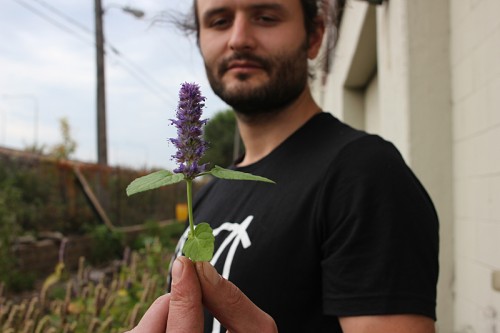
Alyosha with anise hyssop
IN LATE OCTOBER I WAS WALKING THROUGH THE gardens out back of the Green Exchange with Leonard Hollander, one of the owners of Arbor. We were making sure to get some pictures that day, because one of their employees, Alyosha, was in the process of hacking much of it down for winter, while his wife and toddler son played around in the garden.
“Gardens” suggests wide-open square plots, but the reality is that the gardens consist of a strip of land butted up against the fence along the train tracks. Nevertheless, they were planted so thickly with such a variety of things that it rivaled any farm I’d been to for the experience of tasting things I’d never had before. Hollander, who’s almost unnervingly Zen for a chef, lanky and with a boyish open face lined like a farmer’s, would reach over and grab something every few feet and tell me to taste it—anise hyssop, an herb that tastes of root beer; sweet mace, tiny little yellow flowers reminiscent of tarragon; scarlet mustard, a microgreen that sneaks up on you with a powerful mustard bite.
Many of them were, like the mustard green, startlingly intense; the garden seemed like a place that only grew things that knew how to pack a lot of flavor into a tiny herb or blossom. And indeed, the gardeners were serious about being very selective about what went into the garden’s limited space—there are restaurants that grow things more for show than actual use, but as Hollander said, “People ask if we’re going to grow things like corn. Why would we grow something that costs 10 cents an ear? The seeds for scarlet mustard are like $75 for a half pound—we’re going to grow stuff like that and keep the seeds.”
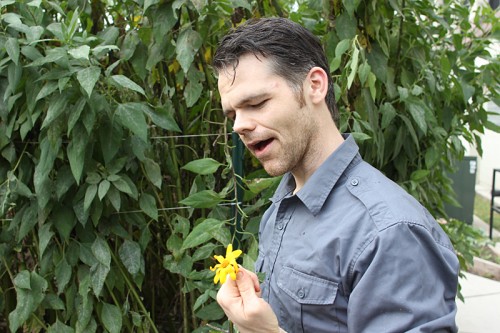
Leonard Hollander
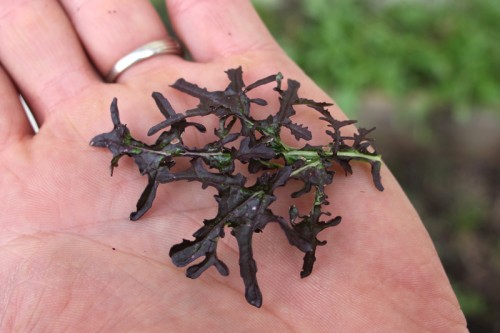
Scarlet mustard
A few things, like the sunchokes that towered ten feet above our heads, would survive and be harvested through the winter, but otherwise the garden was being cut down to gather the last usable things and preserve them—as dried herbs, as vinegars, as cordials. As we went back up the steps to take an elevator to the roof to see Arbor’s bees, Hollander told me how he and co-owner Chad Little wound up running both ends of a farm to table restaurant in a high tech office building.
Underwear. That’s where it started; the building was built as the Vassar Swiss Underwear Company in 1914, and closed as a lamp factory ninety years later when its owners moved their manufacturing to China. Normally a building like that in a hot neighborhood would have quickly gone condo, but there was a push for it to remain a source of jobs for the neighborhood, and ultimately a company called Baum Development bought it and repurposed it into LEED Platinum-certified office space. With space for over a thousand workers and relatively few lunch choices nearby, co-owner David Baum approached Zina Murray, who then had the shared kitchen space Logan Square Kitchen, to help him find someone who would be willing to launch a foodservice operation for the captive audience in the building.
Murray approached Chad Little, who was doing training and business development for Ipsento Coffee. Along the way he’d met Leonard Hollander, who was then the chef of Marion Street Cheese Market in Oak Park, though he lived in Logan Square. As Hollander explained, “I had met him because I was a customer at Ipsento, and we just became great friends over the course of a couple of years, and started building concepts together. We think really similarly about the philosophical elements of a restaurant, and creating a space that doesn’t have what is seen as the typical kitchen vibe, the domineering chef and the really intense lifestyle. I think we’re moving away from that, which is really refreshing.”

Apiary, five stories above Diversey

Prairie patch on the roof
We arrived at the rooftop and stepped out. There was a kind of shed building on the roof full of gardening stuff, and in front of that a loose arrangement of boxes, with bees visibly buzzing around them. Hollander said something about this being an African style of apiary arrangement, which reminded me of a story an African beekeeper in Rogers Park told me about how the only way to get away from pissed-off bees in Africa is to go jump in the river with the crocodiles. This did not make me feel more comfortable about being five stories up over Diversey.
“So we came and checked out the space,” Hollander continued. What they saw was an empty area, one floor up from the security guard in the lobby. “It definitely doesn’t appear at first glance like it makes a ton of sense,” he admitted. “But there were a lot of other elements that made it cohesively, or holistically, really interesting,” not least of them David Baum’s willingness to pretty much let them do whatever they wanted in the building—grow food, keep bees, serve dinner to strangers walking in.
More than anything, what appealed to them was the building’s philosophy. “It really lines up with Chad’s and my beliefs about sustainability and making a dent in the [industrial] agricultural systems and food distribution systems, which ended up jacking with the American perception of food,” Hollander said. “We really want to be—not like a light in the darkness or anything grandiose like that, but a place where people can come and feel super-confident that the food that they’re getting is absolutely real and true.”
“I think it comes down to truth in ingredients, whether it’s the materials that we build our furniture out of or the grains that we put into the grain mill. It comes down to healthy food that we can feed to these people every day—because we have to be here, every day.”
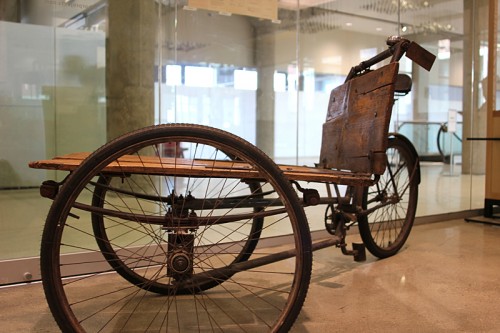
Arbor 1.0
GO UP THE ESCALATOR FROM THE LOBBY and one of the first things you’ll see at Arbor is what looks like it might be a wheelchair from the early 1900s. Actually, this was Arbor when it first started in 2014—a sort of steampunk coffee cart made for them by friends at a woodshop. For months, while the full kitchen and restaurant was being built out, Hollander and Little sold coffee from it while promising that more was coming.
In fact, the “more” came almost immediately. From the first day people were asking for food, and after a few days of considering what they could do on a cart, Hollander and Little hit on selling toast, using bread from the local artisanal baker Crumb. “So we started with just plain butter. And then we started making [flavored] butter, and then jams,” Hollander explains. “And then we bought a waffle iron, and we literally cooked everything on a waffle iron for two months. Then we got a butane burner and we made eggs, because we had chickens out back. And chives. And then we got an induction burner, so we had one breakfast special. We were open for four hours, and we’d do a thousand dollars a day on that cart.”
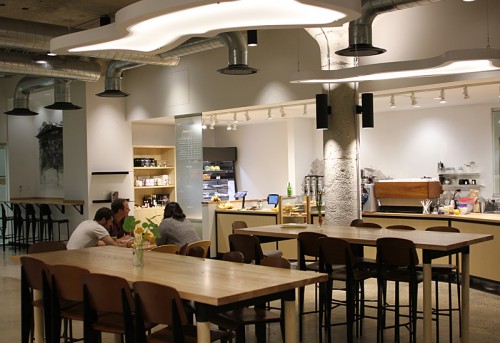
Arbor 2.0
A year and a half later—Arbor finally opened for real in June—the operation seems more polished, for sure. Breakfast offers you coffee, egg dishes, housemade bread and the occasional international touch like a Spanish-style tortilla; lunch brings farm to table sandwiches and salads, which would feel at home in plenty of well-known restaurants. But behind that it’s still something of an understaffed scramble, cranking out sandwiches for pickup, with just Leonard or Chad and a couple of others making everything.
I’m surprised that for all the people in the building, the cafe is never more than half full. Naively, I suggest that getting out of the office for lunch—even just to come downstairs to a cafe—is probably good for clearing your head and making you more productive. Hollander sets me straight on how people really work in 2015: “The demographic up there is like 22 to 35. And the vast majority of them are grinding, it’s like trading. They’re never off the phone. There’s a guy who comes here to work, over living in Lake Forest, because the internet is a second and a half faster here. That’s insane to me, but he says, these requests come up and you’ve got to respond to them right away, he would always get robbed. So it’s a push, and a big next phase for us is delivering upstairs.”
Because it’s a captive audience, Arbor has to change their menu far more often than other places—as in daily, so that people don’t get tired of the food at the only choice their job makes possible for them. But there’s another concern for businesses like this, that Silicon Valley discovered a while back. You can bring in name chefs and have them make restaurant food to deliver to people’s desks as a way cool hipster perk. And in three months, your health plan provider will ask why everyone at the company is gaining weight.
So the company and the service that feed you find that they have to make sure you eat sensibly, too—while still providing the restaurant-level experience that makes eating at your desk seem like it’s your benefit, not theirs. The paradox of an operation like this in 2015 is that we expect to eat like individuals, handcrafted meals just for us, and it can take somebody like a big developer to ensure that artisanal chef and 2015 customer can share that bespoke experience.
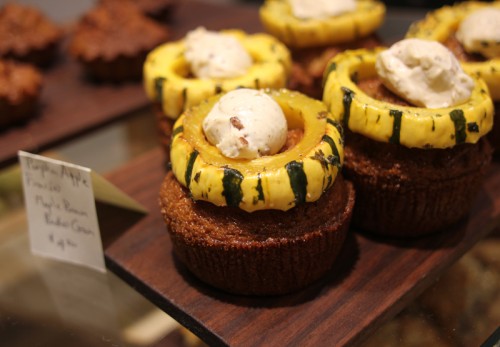
“We’re pushed to be creative every day,” Hollander says. “To have a different breakfast special, a different lunch special. Homemade bread that changes all the time, jams, butters—we’re constantly changing things.” Nor does it end with lunch. The restaurant has a liquor license and a bar, and Monday through Wednesday after work, they do a happy hour of snacks like pizza or what they call “Fried Things”—”Stuff dropped in tempura batter and fried. It’s kind of fun and quirky and weird and just based on what’s around.”
In any case, the responsibility for how other people eat is one that Hollander seems fine with accepting. “I really hope that the most redeeming piece of it is that, as they’re eating it, they realize and understand that it’s delicious,” he says. “But perhaps more importantly, two hours later, how are they feeling?”
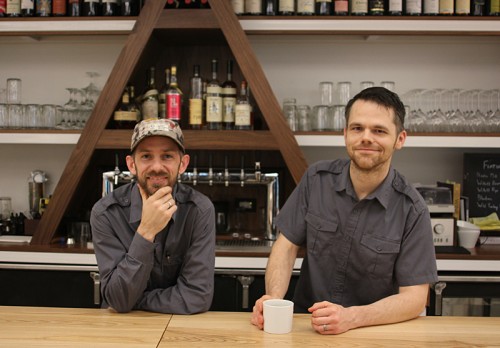
Chad Little and Leonard Hollander
LITTLE AND HOLLANDER ARE CO-OWNERS, but not exactly co-chefs—they resist caring very much about titles, but talk to Hollander and he’ll talk about where the food comes from; talk to Little and he’s more likely to talk about what experience is being created for the guest. What they both are, though, is professional cooks who grew disenchanted with the conventional way restaurants and food in America work—and each, though through very different experiences, saw a better model in Europe.
Little knew he wanted to be a chef at an early age—”My dad was a firefighter,” he says, as if that says all you need to know about growing up around a parent who tinkered with food. But a career in cooking in the Southwest disillusioned him: “Think of Scottsdale, Arizona, a very plastic, surface-y place, throwing a bunch of money, a $7 million buildout, at a restaurant where who’s who wants to be seen. And I’m working it and I’m like, okay, someone just dropped $2000 on this dinner, and the food was… pretty good. It wasn’t like awesome. But they marked up the Courvoisier 30 times. It just felt like a sham.”
He lived for a time in Eastern Europe; in Riga, Latvia he shopped at Eastern Europe’s largest food market, located in a complex of old Zeppelin hangers, and warmed to the interconnection of farmers and ordinary buyers there. In Chicago he went into a field where he felt his interaction with an ingredient could be more authentic—coffee, in the early days (c. 2010) of the explosion of local roasters.
“We interacted with a lot of chefs and bartenders and people who were interested in that sort of thing then,” Little explains. “Most chefs are busy and don’t have a lot of free time, so Leonard and I kind of met each other on our own terms—we’d talk about music, and one of us would say RJD2’s in town and we’d go to an RJD2 concert.” Hollander was the chef of Marion Street Cheese Market then; he invited Little to do the coffee service for some catering events in Oak Park, and they began to talk about doing a restaurant together. Or not a restaurant; they also talked about experiential events, and worked on a series of cocktail events called Field Trip Cocktails, in which they’d drive a bus out to a location like a farm, and do a cocktail party there.
“I wake up every day and my focus is to imbue people with goodness via a fork and a knife. Other than my wife and my son, I don’t care about anything more than that.”
Leonard Hollander grew up in Cincinatti in the 1980s, which he calls “The food revolution of shit in America. The 80s was the most vapid, sad food time in America. The companies were figuring out how to engineer food cheaply, and completely devoid of nutrients, but there wasn’t any understanding on anyone’s part of what that actually does.”
When he was 21, he was finishing up a degree in information systems, already working in that field in retail—and hard as it is to believe from his thin frame now, he weighed 320 pounds. Working on his feet in pain all day convinced him that he had to change himself—a job which he approached like an engineer. “Immediately, it was the overreaction, the overadjustment. It was like, you know what I’m going to do? I’m going to run until I pass out.”
In his last semester in college, he took nutrition classes and started cooking, and he found a whole new world in food—”I had no understanding that there even were people who were culinarians. I had my first multicourse meal on my honeymoon! It was a crazy transition for me. Now I wake up every day, and my focus is to imbue people with goodness via a fork and a knife. Other than my wife and my son, I don’t care about anything more than that.”
What didn’t imbue him with goodness was actually going to culinary school—”I finished up my Calculus IV and they’re teaching me how to add two tablespoons to something.” His convert’s zeal contrasted unhappily with students just looking for a job, and he quit after two months. What changed his life this time, he says, was “just going to a restaurant and saying, ‘I don’t know very much at all, but I completely yield to your learning and your teaching me whatever you desire.'”
The first chef he asked for a starting job, Jackson Rouse of Cincinatti’s Iron Horse Inn, hired him and remains a close friend to this day. “I was super uptight, I was a very negative person, very closed-minded. He looks like a gigantic Buddy Holly with, like, tattoos all over. Total opposite of everything I had ever experienced in life,” Hollander says. “Meeting him and being exposed to, like, punk rock culture and things beyond what’s culinary were just so amazing and shocking to me. He taught me everything, he taught me how to trust myself—that I have the capacity to build flavor, and taste it, and build more flavor. I never forget that, every time I cook, I think of that.”
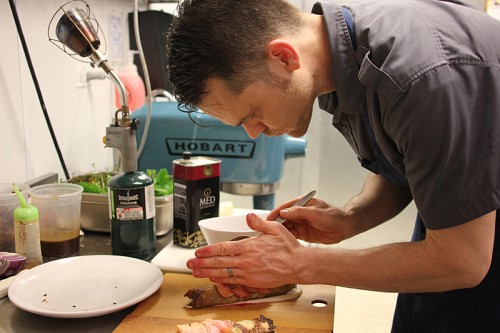
After a few years Hollander came to Chicago and worked at Ambria and for Graham Elliot at Avenues, then as his opening sous chef at Graham Elliot. (Little says “What drew me to him is that he’s very skilled and talented, but he doesn’t tell people where he worked. A lot of guys I worked with, they ride the coattails of some chef or restaurant group.”) Between jobs at one point, he and his wife took a day trip to Oak Park; he asked Marion Street Cheese Market if he could stage for a few days, and they responded by offering him the job of head chef.
He put Marion Street’s cafe on the map, first winning a WBEZ competition in 2011 where every other chef competing was substantially better known, then in 2012 winning a Michelin Bib Gourmand, one of the few acknowledgements of the Chicago suburbs ever from Michelin. After four years there the owners, in gratitude, told him they wanted to do something for him, so he pitched them on the idea of giving him three months off so he and his wife could go to Europe, to stage around and experience Europe’s food cultures.
They had to know that it might make him not want to remain there when he returned. Working connections from one restaurant to the next, he had another life-changing experience experiencing the warmth and closeness with producers of the European restaurant scene. When he and his wife had their son, they named him for one of the chefs they had met along the way. But just as crucially one of the things it changed was his desire to make a restaurant of his own that had a similar connection between farming and restaurant and winemaking culture‚ but in a way that reflected where he was from—the American midwest.
Gallery: Midwestern Omakase at Arbor
HOLLANDER IS A LITTLE BASHFUL ABOUT USING the term “midwestern omakase.” “One thing I want to be careful of is not disrespecting the word or the meaning or the historical context of the omakase,” he says. “We’re not making Japanese food—we’re in the midwest.”
The multi-course tasting menus Arbor does on Thursday and Friday nights are the most ambitious thing they do, and the one that demonstrates most clearly that they intend to be more than a commissary for an office building. But even it started, as things tend to do at Arbor, as a simple desire to serve a need of the people in the building. (Then, like serving breakfast on a cart, it got more complicated.)
“It kind of started with people just coming down and asking for dinner,” Hollander explained. “So we’d ask them what are you into, and how much do you want to spend? We’ll just make you something.” Hollander and Little are both fans of Japanese food—when they go out to eat together, they tend to go to the sushi restaurant Kai Zan—and involving the customer in devising the menu struck them as being a lot like a Japanese omakase. “It comes from that word meaning, basically, come in and we’ll take care of you. It’s a little bit of a culinary hug.”
They’re serious about the “ask them what you’re into” part. Normally you go to a tasting menu for the chef’s artistic vision, but Arbor is sincere about collaborating with you on your meal—as soon as I said I wanted to attend to with a friend, I got back an email asking me questions like “What was the most memorable dining experience you’ve had?” “What do you want for your last meal?”
To be honest, I found it difficult, as a personal and professional omnivore, or maybe as someone too used to the idea of going to a place for the chef’s vision, to come up with input. I briefly considered satisfying one of my personal bugbears—I don’t think mushrooms bring nearly as much to dinner as they think they do—but in the end, I unhelpfully told them to make whatever they wanted and I’d promise to be happy.
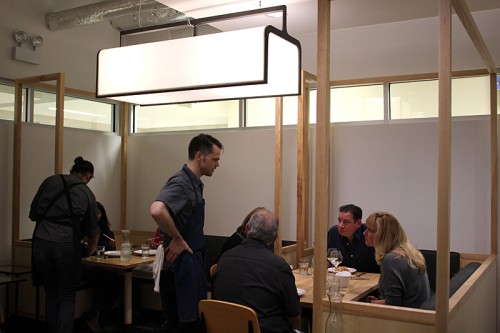
We arrived on a Thursday night, the office space looking a bit like a mall after hours, bathed in a kind of fluorescent twilight. Little admits that the atmosphere of the dinners is lacking—he spent hundreds of hours making sure the restaurant’s handcrafted lighting fixtures had the right color temperature and intensity for dining, so he sighs that fixing light pollution from outside just isn’t something he’s managed to deal with in the two months that they’ve been serving dinner. But he talks about using lighting within the space to making it more of a defined experience—eventually.
Tasting menus are an ego show to some extent, yet this one seemed genuinely humble—that is, midwestern.
I thought we might be the only guests that night, but in fact the dining room was as full as I’d seen it. The first taste was something straight out of the modernist playbook—a plastic bulb syringe filled with citrus and hops-flavored powder, what Hollander called a “grownup Pixie stick.” The pop food culture reference suggested Hollander’s experience with Graham Elliott. But the dishes that followed were homey, rustic, and spoke of the gardens out back (I recognized sweet mace when it garnished one dish). Tasting menus are an ego show to some extent, yet this one seemed genuinely humble—that is, midwestern. Mostly things just tasted of what they were, cleanly and precisely. Alyosha, the gardener I’d met on my first visit, turned out to be a pretty skilled sommelier, too, talking us through wine pairings with reference to when they’d sat around trying them after lunch.
So how does it compare to other tasting menus in this city? Well, they’re new, and they’re mostly not aiming for the thing so many others aim for—the lush protein surrounded by architecturally arranged vegetables and leaves, with a couple of bloops of acidity or creaminess on the plate. A buckwheat pancake with seared salmon on top may strike you as something that wandered in from the 1940s—but that’s part of what their food is about, the comforts of the part of the country where stuff grows (well, buckwheat if not salmon). Its pleasures are the sincerity of the experience and the honest taste of things grown here—and here and there, something spoke to where it came from in a way that transcended midwest humility.
There’s a point in every tasting menu when you know you’re finally going to get red meat. Sure enough, at one point I thought I saw it coming—and then I was told what the platter of big meaty-looking chunks actually was: mushrooms, including some chicken of the woods that John, one of the baristas, had foraged not long before. It was a fantastic dish, deep and earthy, like burying your face in healthy soil; I was so glad I hadn’t said a word about my mushroom disaffection earlier, though the irony of congratulating myself for not influencing my own dinner would soon be pointed out.
“It’s not really a tasting menu. Well, it is, but it’s more because the guest has a role in creating it,” Hollander would explain the philosphy to me afterwards. “I’m not saying everything is new and this amazingly creative stuff, but it tastes good, and it’s thoughtful, and it’s produced from high quality-sourced items.”
“It’s memorable, that’s probably the biggest thing. It’s been really fun, just creating stuff with people. I mean, if someone has told you that their favorite thing is scallops, and you bring them a scallop that you worked on to make as perfect as possible, and they lose their shit over it… what’s better than that?”
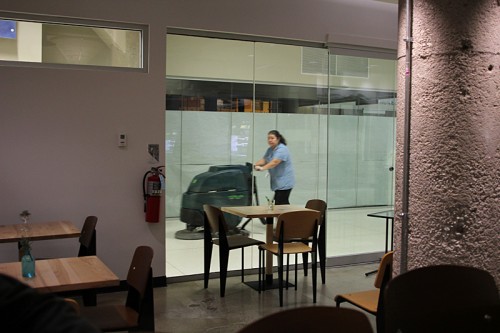
Michael Gebert is as Midwestern as editors of Fooditor get.
Latest
Join the Discussion
After you comment, click Post. If you're not already logged in you will be asked to log in or register with Disqus.












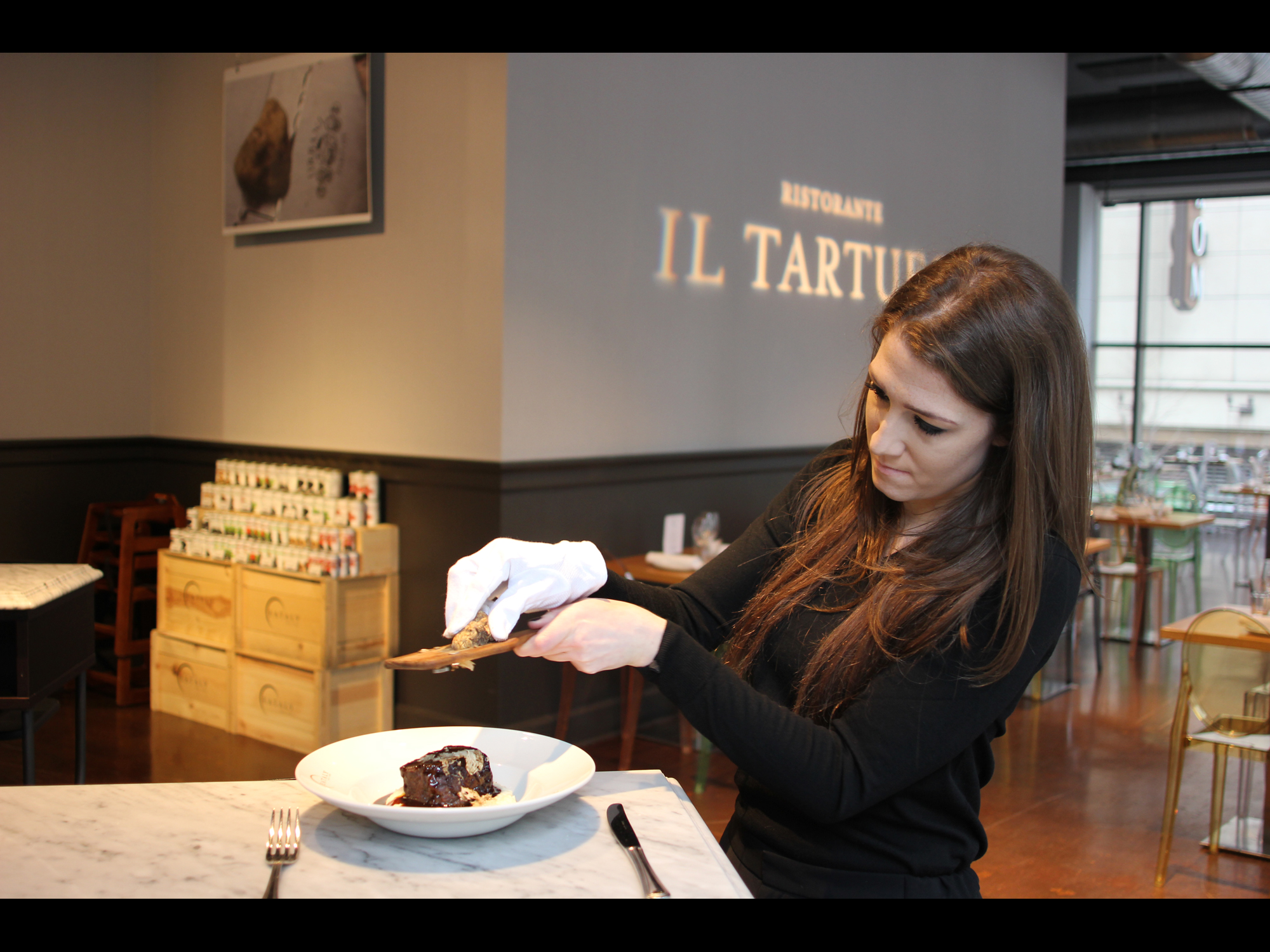
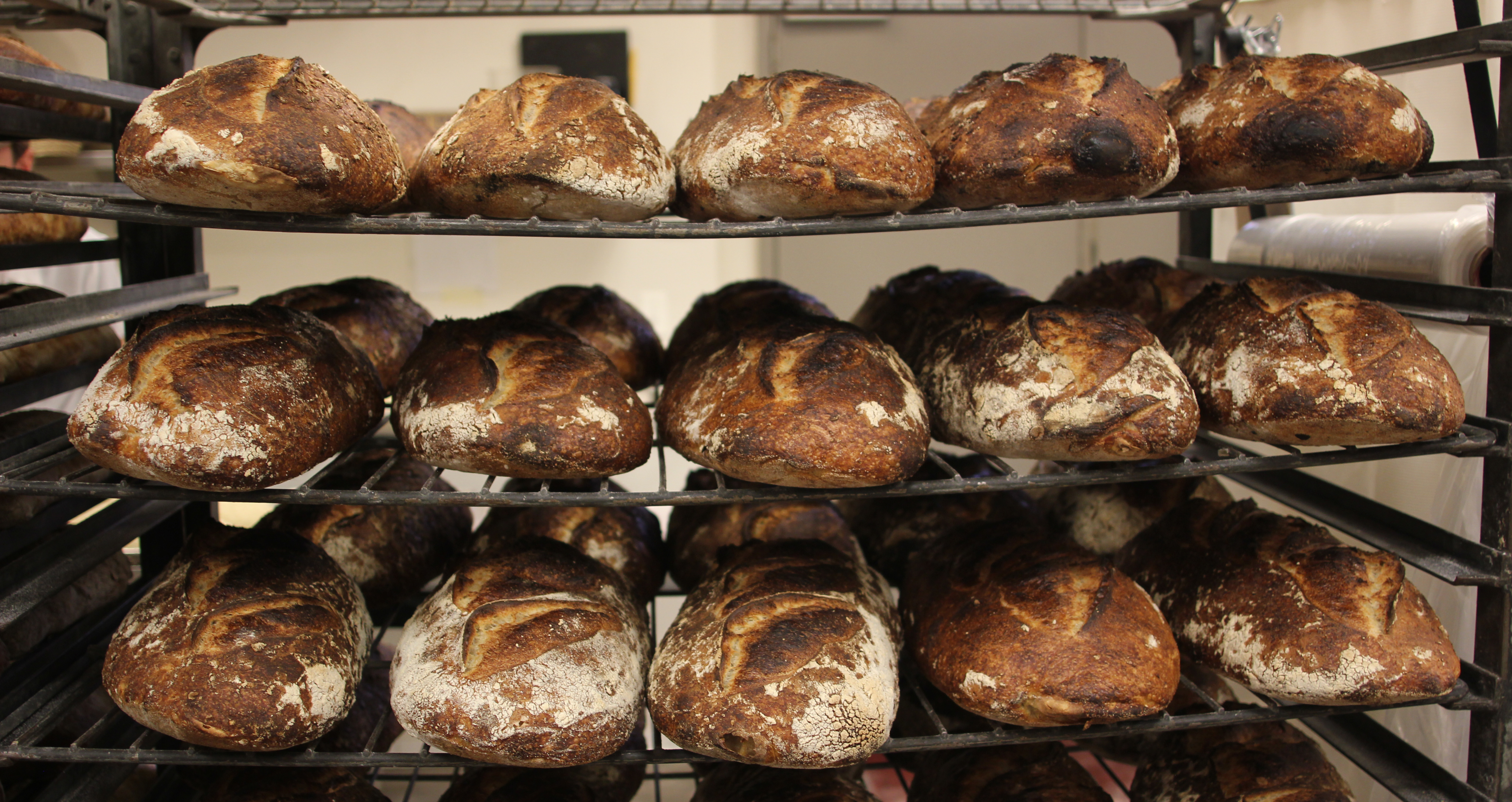
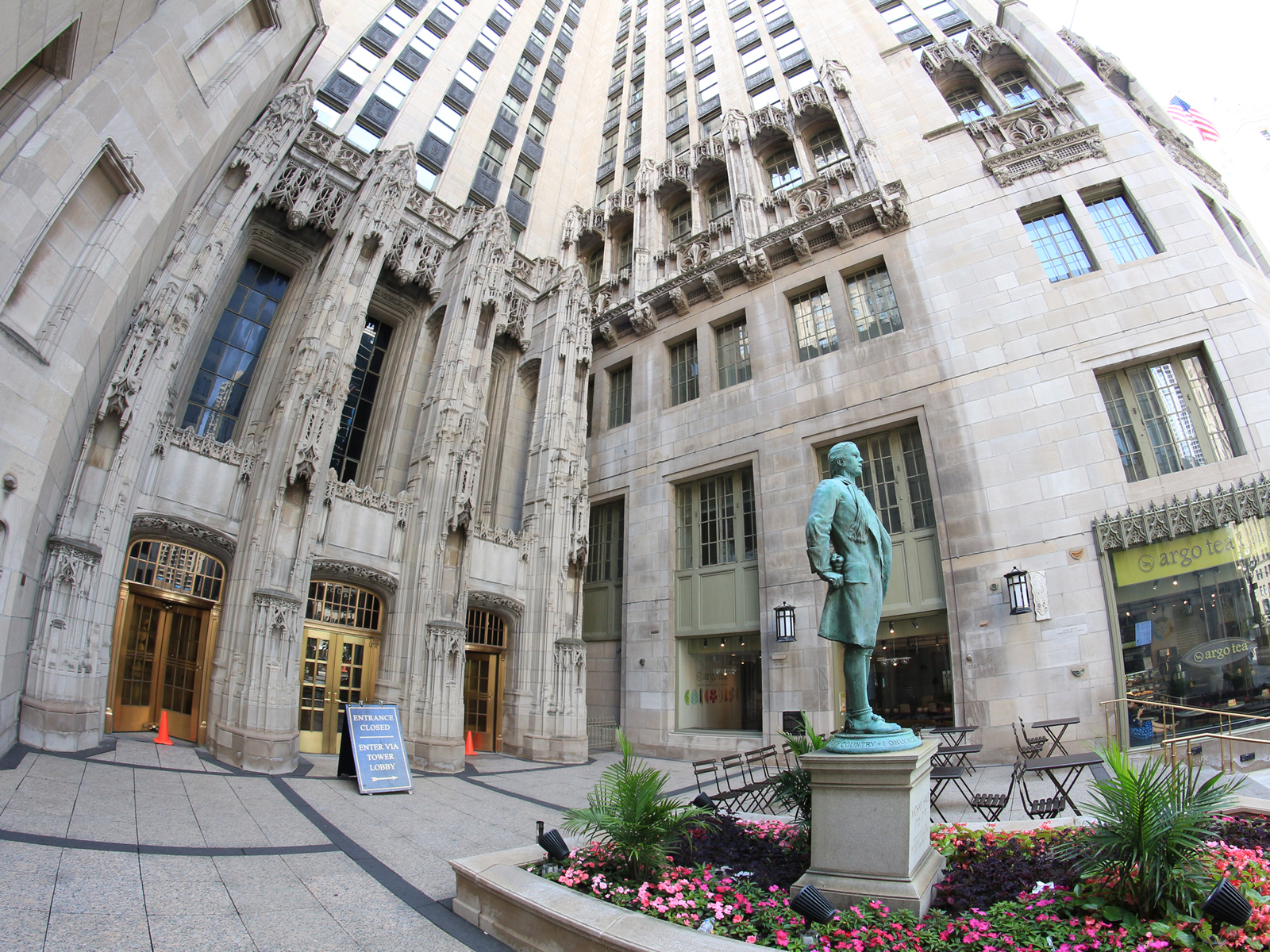
[…] Arbor combines a farm, coffee shop, and tasting menu, and its quiet approach is slowly gaining a following. Fooditor profiles the new establishment. […]
[…] Arbor combines a farm, coffee shop, and tasting menu, and its quiet approach is slowly gaining a following. Fooditor profiles the new establishment. […]
[…] Arbor combine a farm, espresso store, and tasting menu, and its quiet method is slowly and gradually getting a pursuing. profiles Fooditor the new institution. […]
[…] Arbor combines a farm, coffee shop, and tasting menu, and its quiet approach is slowly gaining a following. Fooditor profiles the new establishment. […]
[…] dish, Arbor— The last place I need to write more words about; go to Fooditor to find what’s so special and interesting about it, and how a coffee shop served me a dish of […]
[…] Check out this article for all the details on Arbor’s start and what it’s all about. >> […]